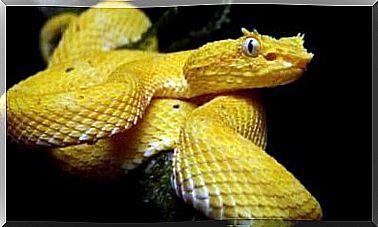How Do Dolphins Sleep?

These mammals spend all their time in water, but every now and then they have to reach the surface in order to breathe. How do dolphins sleep?
In this article we tell you all about the curious nocturnal habits of cetaceans and other marine mammals. Discover with us how dolphins sleep.
How do dolphins sleep?
Dolphins, as well as whales and killer whales, sleep with one eye open and half brains awake. No, we’re not joking at all.
These marine mammals activate “slow wave sleep”, so called because, during rest, only one of the two hemispheres of the brain loses consciousness.
The same thing happens to the eyes, as one closes – the opposite half of the brain “shuts down” – while the other remains open.
The non-resting brain hemisphere is in charge of monitoring breathing, as well as rising to the surface for breathing.
Over a 24-hour period, each cerebral hemisphere rests for four hours. Thus, the dolphin sleeps a total of eight hours every day.
Sometimes, during sleep, dolphins float motionless on the surface of the water, other times they swim very slowly.
It can also happen that they descend into the depths of the ocean to return to breathe only occasionally (since they do not perform particular activities during sleep, they do not need to breathe as often).

Generally, dolphins sleep at night for two hours with the right hemisphere and the same amount with the left one. During the rest of the day they repeat this operation for another four hours.
Why do dolphins sleep like this?
There is an old proverb that says: “nature is wise”. Nothing is left to chance and all species are equipped with what is necessary for survival. Obviously, among these, the dolphin cannot be missing , able to sleep without totally abandoning itself to sleep.
Unlike what happens to terrestrial mammals, marine mammals do not completely “deactivate” the brain when they rest, nor the muscles. They cannot allow themselves the luxury of relaxing and sleeping deeply, as they need to rise to the surface to breathe every now and then, which is impossible in deep sleep.
On top of that, when dolphins sleep they don’t deactivate any of their senses. While resting terrestrial animals turn off sight and smell, they do not.
One of the reasons dolphins sleep with an eye and a half brain alert is to be able to pay attention to possible dangers, such as a fishing boat, a shark or an orca.

At the same time they manage to keep some physiological processes that they need active, such as the muscle movement necessary to maintain body temperature in the water.
Although they are warm-blooded animals that usually live in tropical climates, totally indulging in sleep would mean reducing their body heat, with consequent health risks.
And the whales?
Something similar to dolphins also happens to large marine animals such as whales or killer whales, which have the same need to rise to the surface to breathe. Thanks to the awake half of their brains, in fact, they swim slowly and on the water.
Another interesting fact about the sleep cycle of whales is that when they are small – fin whales – they rest, eat and sleep next to their mother, who never stops swimming for a minute.
The baby is placed in such a position that the movements in the water produced by the mother give him the right push. This way, while he sleeps, he can stay most of the time without sinking.
It is truly fascinating to find out how dolphins and other marine animals sleep. With this awake half brain technique they ensure survival and avoid dangers.








